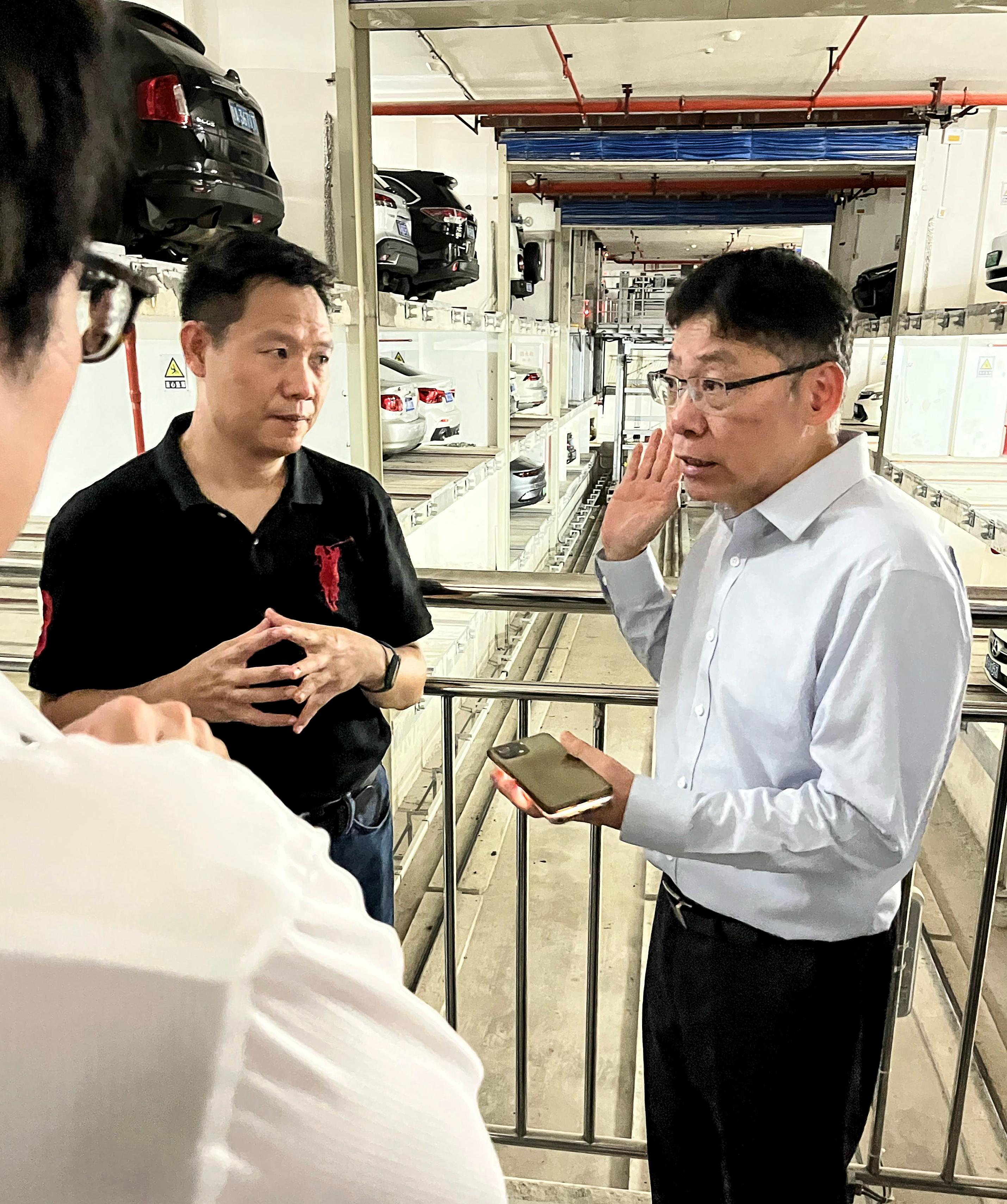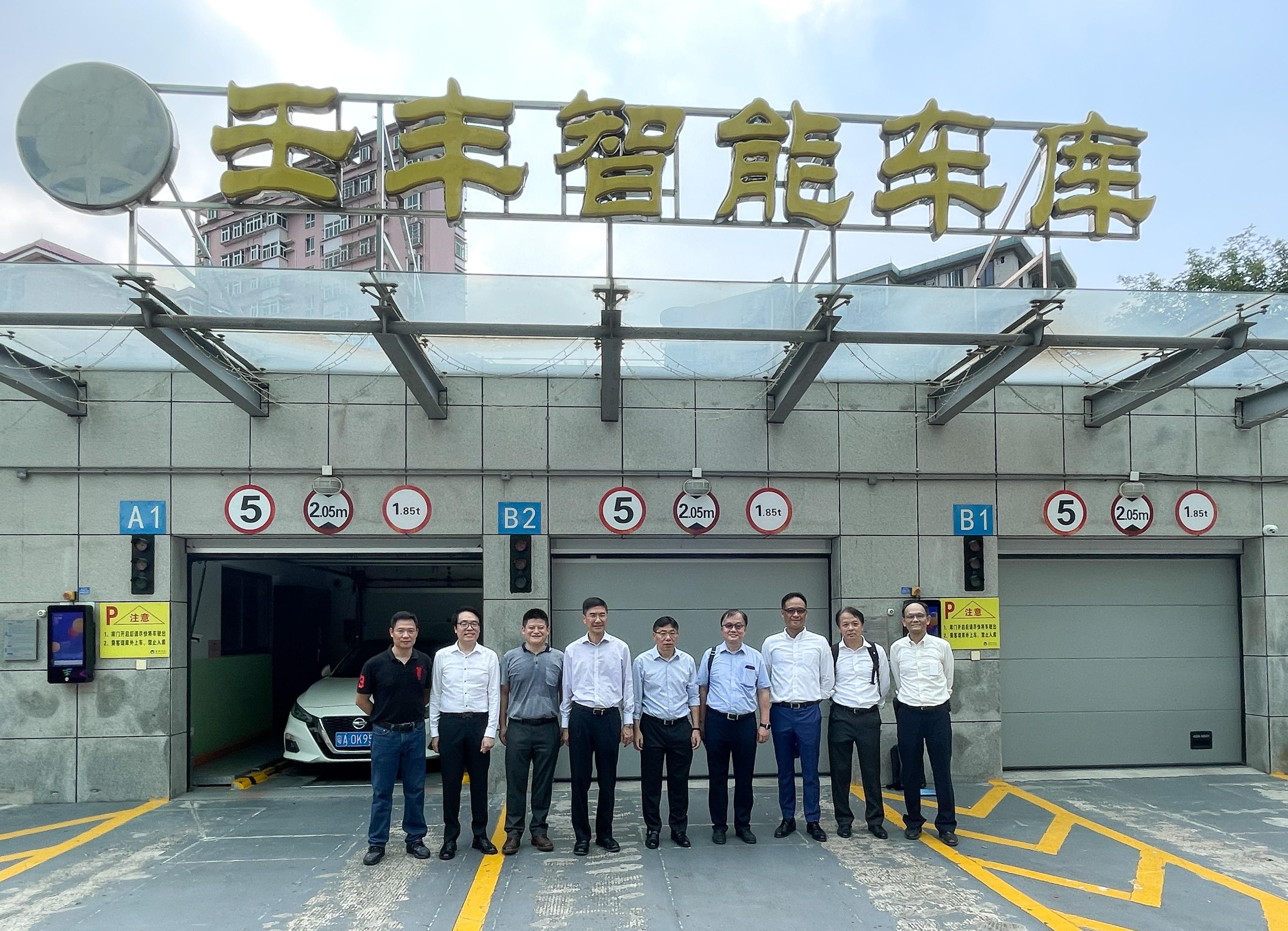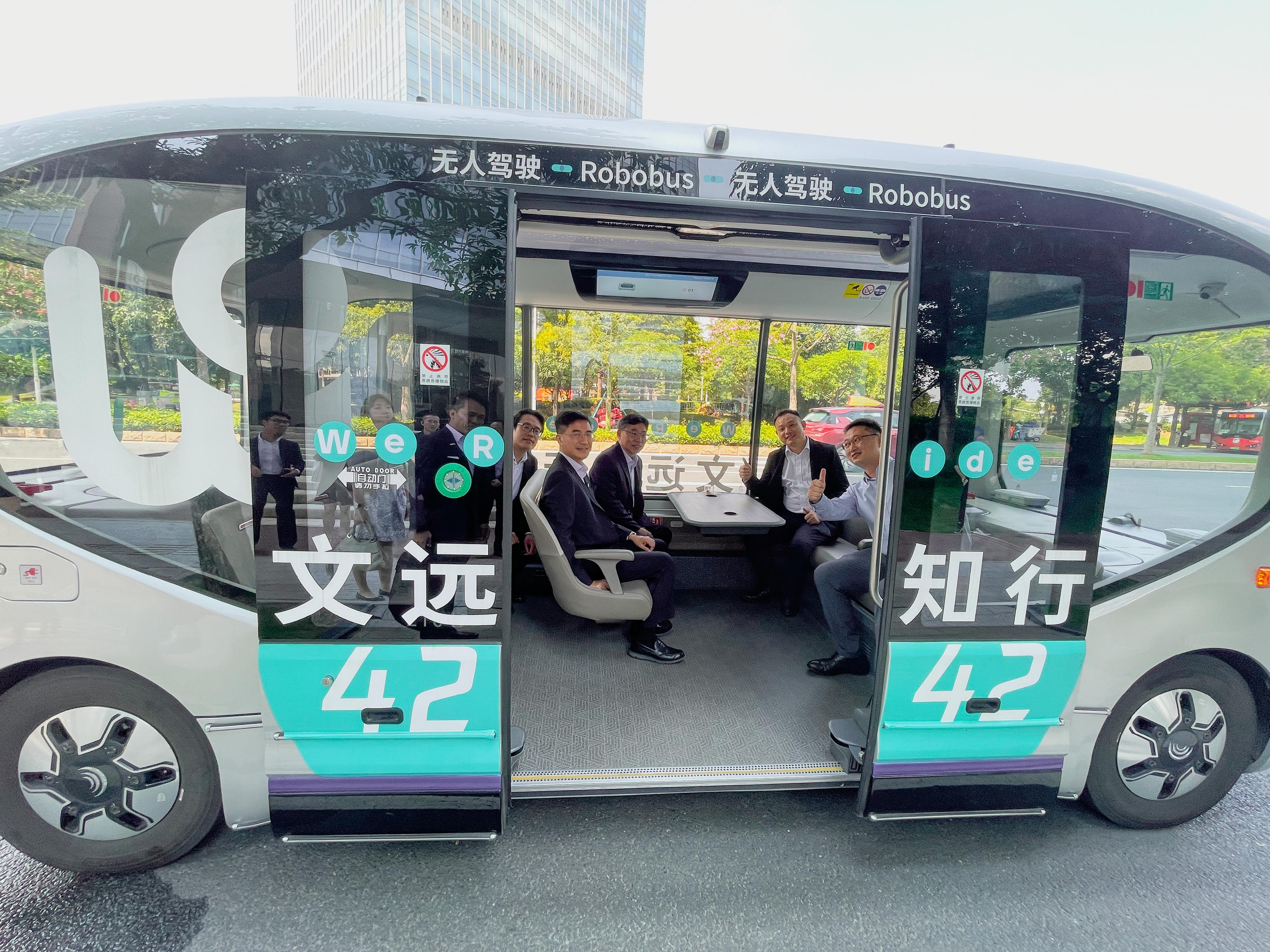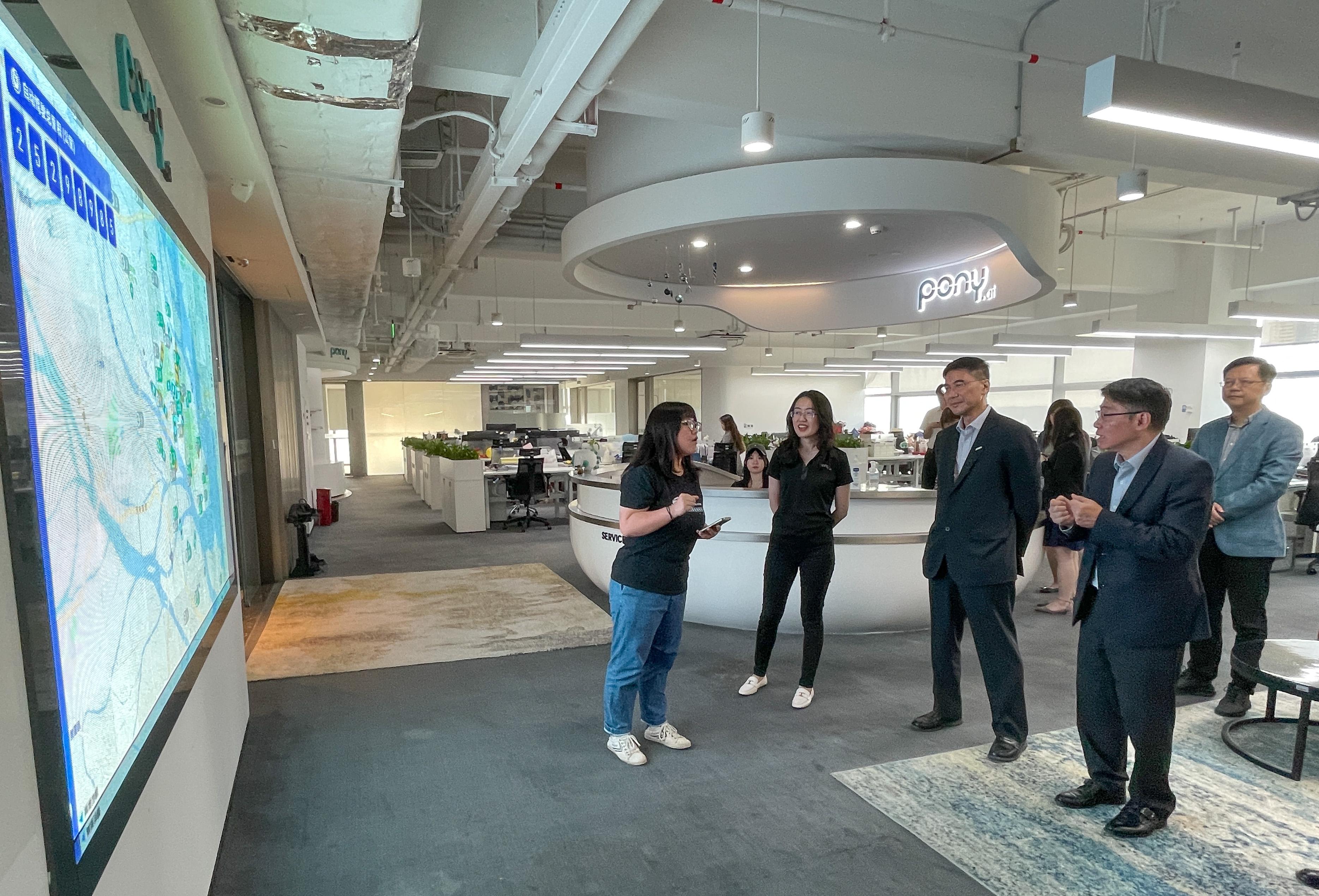STL inspects smart mobility in Guangzhou (with photos)
******************************************************
In the morning, he visited a large-scale underground parking system in Tianhe District to inspect a Vertical Lifting and Horizontal Sliding System. The system uses three-dimensional movement for parking and retrieval of vehicles, and is suitable for application in relatively large car parks. Drivers need not U-turn or reverse their cars, which is convenient and reduces queuing time at the same time. The three-storey underground car park can accommodate more than 200 vehicles.
"Over the past few years, the Transport Department (TD) has been taking forward APS at various locations and gained experience in the construction, operation and management of different types of APS as well as the associated financial arrangements, which facilitates the continuous efforts to promote such projects. Apart from the two commissioned APSs at Hoi Shing Road in Tsuen Wan and Pak Shek Kok in Tai Po, the Government has been installing larger-scale APSs controlled by an intelligent system, which will provide automated parking search and vehicle access, in three other locations, namely Tseung Kwan O, San Po Kong and Sham Shui Po. We will step up exchanges and co-operation with various cities on the Mainland and overseas, and introduce timely technology and related complementary measures to expedite the implementation of smart mobility," Mr Lam said.
After that, he visited two autonomous vehicles companies, WeRide and Pony.ai, to listen to the latest updates and challenges of commercial operation of autonomous vehicles, and to exchange views on how to accelerate the application of autonomous driving in Hong Kong. Both companies are based in Guangzhou. The former, founded in 2017, currently has more than 600 autonomous vehicles and has launched research and development, testing and operation of autonomous vehicles in more than 26 cities around the world; while the latter, founded in 2016, has launched autonomous taxis (Robotaxis) on the Mainland (Beijing and Guangzhou) and in the United States.
"To cope with the increasing demand for transport, the Hong Kong Special Administrative Region Government has been actively promoting smart mobility to maximise the use of limited road space, in addition to continuing our efforts to develop a public transport system with railways as the backbone and expand the road network. In terms of autonomous driving technology, our country is mature in terms of infrastructure, technology development, pilot tests and application. Various intelligent traffic management measures are also well advanced. Through today's visit, we have learnt from the Mainland's successful experience, which will help us take forward various smart mobility initiatives in Hong Kong and make our city more liveable and sustainable," he said.
Representatives from the Hong Kong Applied Science and Technology Research Institute Company Limited (ASTRI) accompanied Mr Lam today. With the support of the Smart Traffic Fund under the TD, the ASTRI is taking forward the second phase of cellular vehicle-to-everything (C-V2X) public road tests to verify the application of advanced C-V2X technology, thereby enhancing mobility competitiveness and road safety in Hong Kong. In addition, the ASTRI was provided with about $20 million of funding support by the Smart Traffic Fund last week to develop the first autonomous shuttle bus (AIBus) for operation on public roads in Hong Kong. The West Kowloon Cultural District will serve as the testbed for the project.
Mr Lam returned to Hong Kong in the evening after his visit to Guangzhou.
Ends/Thursday, September 21, 2023
Issued at HKT 18:44
Issued at HKT 18:44
NNNN










